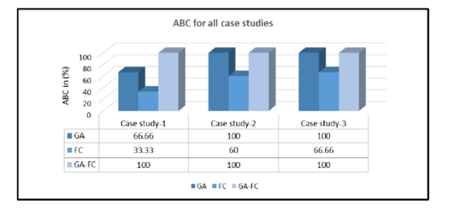


Indian Journal of Science and Technology
DOI: 10.17485/IJST/v14i41.1141
Year: 2021, Volume: 14, Issue: 41, Pages: 3074-3081
Original Article
Susheela Hooda1*, Vikas Lamba1, Amandeep Kaur1
1Chitkara University Institute of Engineering and Technology, Chitkara University, Rajpura, Punjab, India
*Corresponding Author
Email: [email protected]
Received Date:21 June 2021, Accepted Date:08 November 2021, Published Date:04 December 2021
Objectives : Exhaustive testing requires more effort and consumes lots of time of the software testers. Recently, “GA-FC” technique has been proposed to generate test cases optimally for Aspect-Oriented Software System (AOSS). This paper evaluates the performance of the proposed “GA-FC” technique. Method: To analyze the performance of “GA-FC” technique, two parameters namely, Effectiveness of Test Suite Minimization (ETSM) and Aspectual Branch Coverage (ABC) have been used against GA and FC technique individually. Findings: - GA-FC technique has been applied on three case studies and the obtained results reveal that GA-FC technique reduces the testing efforts by producing the minimum number of test cases and time of the tester. Novelty: “GA-FC” technique generates the minimum number of test cases by composition of metaheuristic techniques.
Keywords: AspectOriented Software System; Aspectual Branch Coverage; Genetic Algorithm; Fuzzy Clustering Algorithm; AspectOriented Software Testing
© 2021 Hooda et al. This is an open-access article distributed under the terms of the Creative Commons Attribution License, which permits unrestricted use, distribution, and reproduction in any medium, provided the original author and source are credited. Published By Indian Society for Education and Environment (iSee)
Subscribe now for latest articles and news.